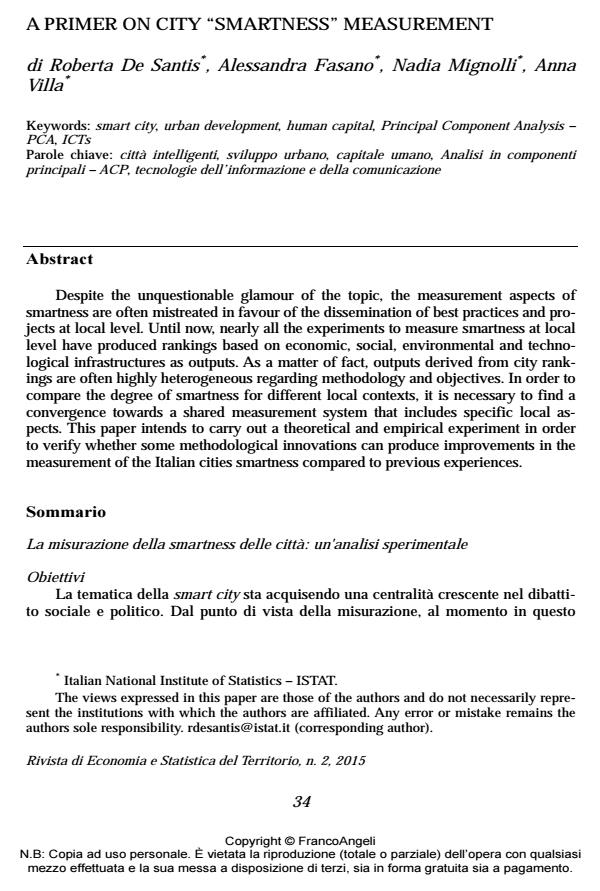A primer on city "smartness" measurement
Journal title RIVISTA DI ECONOMIA E STATISTICA DEL TERRITORIO
Author/s Roberta De Santis, Alessandra Fasano, Nadia Mignolli, Anna Villa
Publishing Year 2015 Issue 2015/2
Language English Pages 18 P. 34-51 File size 99 KB
DOI 10.3280/REST2015-002002
DOI is like a bar code for intellectual property: to have more infomation
click here
Below, you can see the article first page
If you want to buy this article in PDF format, you can do it, following the instructions to buy download credits

FrancoAngeli is member of Publishers International Linking Association, Inc (PILA), a not-for-profit association which run the CrossRef service enabling links to and from online scholarly content.
Despite the unquestionable glamour of the topic, the measurement aspects of smartness are often mistreated in favour of the dissemination of best practices and projects at local level. Until now, nearly all the experiments to measure smartness at local level have produced rankings based on economic, social, environmental and technological infrastructures as outputs. As a matter of fact, outputs derived from city rankings are often highly heterogeneous regarding methodology and objectives. In order to compare the degree of smartness for different local contexts, it is necessary to find a convergence towards a shared measurement system that includes specific local aspects. This paper intends to carry out a theoretical and empirical experiment in order to verify whether some methodological innovations can produce improvements in the measurement of the Italian cities smartness compared to previous experiences
Jel codes: A13, L90, O18, R12
Roberta De Santis, Alessandra Fasano, Nadia Mignolli, Anna Villa, A primer on city "smartness" measurement in "RIVISTA DI ECONOMIA E STATISTICA DEL TERRITORIO" 2/2015, pp 34-51, DOI: 10.3280/REST2015-002002